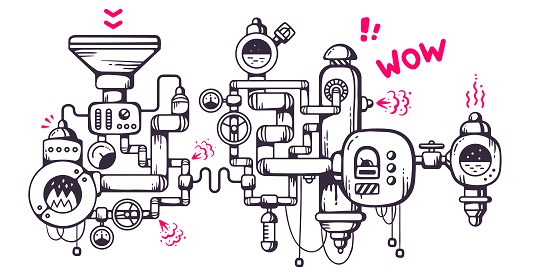You might have heard the phrase “It’s not a bug, it’s a feature!” – well, the first software bug was definitely not a feature.
An unexplained error kept appearing during genius engineer Grace Hopper’s work designing the Mark II computer in 1947. After careful study, fellow engineers finally found the source – a moth was trapped in a relay.
From then on, the Mark II engineers referred to unexplained problems as “bugs” – and software bugs have been with us ever since.
The Do Everything Platform
Computer design has come a long way since the late 1940s, but software bugs are very much still with us. The bigger and more complex software is, the buggier it tends to be. And if you’re not using software in a way the developer considered when designing it, there’s a very good chance you’re going to encounter some “bugs” along the way.
That’s the problem with expansive “Business Process Management” or “Low Code” products that claim to be able to handle any business process with ease. Developers can’t possibly consider how each of their thousands of design decisions will impact every possible business process. That’s why users of these products frequently encounter “features” that have no value to them at all.

All those useless options are going to increase the size of the product and slow it down. They’re also going to make it harder for you to find the features you really do need. It’s also difficult for new employees to learn how to use without the benefit of hands-on training, increasing the training burden each time a new team member joins the organization. And, of course, they make the product bigger and bulkier – leading to more bugs.
Never-Ending Configuration Is Time-Consuming and Expensive
The solution to this problem, according to some platform developers, is product customization. By integrating only the modules your team needs, you can build a product that’s uniquely suited to you.
Of course, it’s probably true that with enough customization, a bulky platform can be honed to meet your team’s needs. But that often leaves you running your own unique codebase as well – leading to more bugs and slower updates. Even worse, the developer’s customer support team may know even less about your product’s configuration than your own users!
Is There a Case Management Product That Can Be “Made for You?“
Products like these are sometimes targeted at government investigators via a page on a software provider’s website explaining how government investigators could use their product. While it’s a nice gesture, that single page doesn’t mean the product was designed for investigative case management. Especially if the page is one of dozens of other “served markets.” It also doesn’t mean your agency won’t be an afterthought as new product features are planned.
Here are three ways to determine whether a company’s software is truly a good fit for your team, or if you’re destined for a buggy experience:
Talk To Customers
The best way to learn how well a software provider serves organizations like yours is to talk to current customers. Don’t just ask for one or two references – ask for several current customers similar to your own organization. Ask those customers if they’ll discuss their experience with product configuration, launch, training and support. Ask if the product has been kept up-to-date, and if the software provider takes their feedback on new features into consideration. Most important of all, ask if the agency’s users enjoy using the product – or dread it
Ask About Implementation
For a case management product to conform to your agency’s workflow, it will need to be configured before launch. If you’re planning on importing historical data, aligning those data fields with those of the new product will also take time.
With that being said, product implementation should not become its own project. Product implementation should be a process – one that has proven effective for plenty of past customers.
A case management product might take several weeks to implement, but it shouldn’t require a large team or thousands of hours of work. That’s a sign that the product is too complicated for its own good – or yours. When implementation drags on for months, it also takes valuable time away from your team and leaves you working with a legacy product for that much longer.
Ask About the Product’s Past and Future
Even when implementation is quick and simple, switching to new case management software can be a painful process. Agencies need to formally justify the expense. Many agencies must acquire products through an open bidding process, which means an RFP must be prepared. And because the legacy system isn’t always well-supported, gaining access to properly formatted historical data files can be difficult.
If you’re considering a case management software upgrade, then you’re already having to go through this process once; it would be great to avoid it again for as long as possible. That requires that the software provider continue supporting the product with updates relevant to your organization for years into the future. One thing that’s guaranteed to cause bugs is a product that receives no updates even as your agency’s network continues to evolve.
Unfortunately, not all providers maintain focus on their products for decades. Some abandon old products every few years. Others abandon market segments as they pursue the ‘next big thing’.
Before you invest your time and money into a case management platform, make sure the company building it has a history of supporting the product themselves!
To learn how CMTS can help your investigative agency manage cases more efficiently, email us at Team_CMTS@securecasemanagement.com or call us at 855-667-8877.
